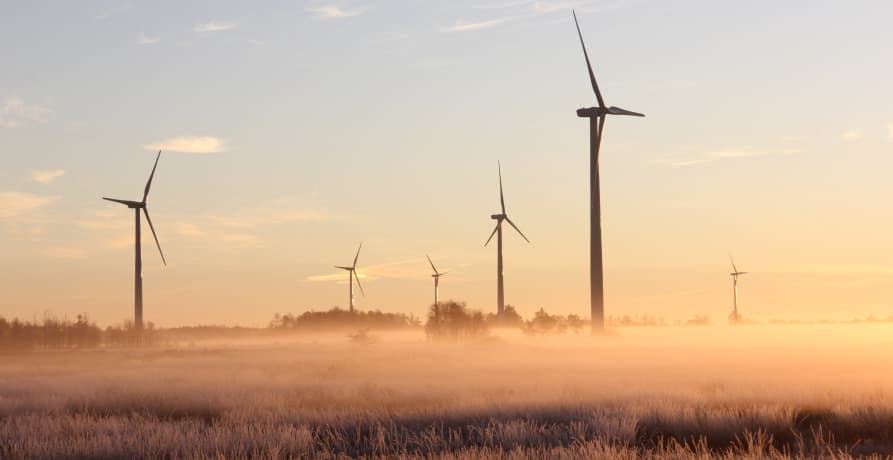
Sustainable Development Goals (SDGs): All You Need to Know
The United Nations has defined 17 goals, aimed at creating a better world. What are these so-called "Sustainable Development Goals" ? Explanations.
ESG / CSR
Industries



On Monday, April 4th, 2022, the Intergovernmental Panel on Climate Change (IPCC) unveiled the third part of the Sixth Assessment Report - Climate Change 2022: Mitigation of Climate Change - in a press briefing. Will this report go down in history? Without a doubt, its findings are indisputable and the stakes have never been higher.
The pressing question is: how can we, as a species, address global warming and halt the extensive damage inflicted upon people and the natural world? To solve this complex issue, scientists have been laboring tirelessly. The circumstances are critical: the first two IPCC reports (published in August 2021 and February 2022) issued a dire warning about climate change's existential threat to humanity. And it's nothing short of that. Global warming is not only accelerating but wreaking havoc on our ecosystems, leaving irreversible impacts on the environment and humanity.
Does this mean all hope is lost? Absolutely not. We, as societies, hold all the necessary tools to avert this disastrous course. In fact, the primary objective of this third report is to outline potential solutions that could help us safeguard the future of our planet.
👉 In this article we’ll explore the findings of the IPCC working group report, and examine the solutions that are presented.
Founded in 1988, the Intergovernmental Panel on Climate Change (better known as the "IPCC") was tasked with compiling comprehensive assessments on the scientific, technical, and socio-economic aspects of climate change. These reports encompass an understanding of the causes, potential impacts, and possible mitigation strategies for climate change.
To clarify, the IPCC's new report doesn't conduct fresh research. Instead, it synthesizes existing knowledge based on the latest scientific publications.
These assessments are subsequently provided to governments to guide policy development and decision-making.
The IPCC comprises three specialized working groups:
The IPCC is currently engaged in its sixth assessment phase, a comprehensive process that involves the production of the Sixth Assessment Report (AR6). This report is a collective effort, featuring contributions from the three Working Groups, alongside a Synthesis Report, three Special Reports, and an update to the latest Methodology Report.
On August 9, 2021, the IPCC released its first working group report, (the Working Group I contribution to the Sixth Assessment Report, Climate Change 2021: The Physical Science Basis), revealing that climate change is accelerating globally at a pace more rapid than anticipated. This report was the collective effort of 234 scientists hailing from 66 countries, and drawing upon more than 14,000 scientific studies.
The key takeaway: Even if we manage to curb global warming, the frequency of natural disasters is predicted to surge. The report estimates that global temperatures will rise by 1.5°C by 2030 - a full decade earlier than the IPCC's previous predictions. Why such a shift? The answer lies in the fact that many nations across the world are falling short of their commitments to slash their greenhouse gas emissions.
👉 It's worth noting that CO2, primarily produced by the burning of fossil fuels, is the chief greenhouse gas driving global warming.
Critically, the IPCC evaluated five scenarios, with the most pessimistic projecting a temperature rise of between 3.3 and 5.7°C. This projection is alarmingly higher than the goal set by the Paris Agreement in 2015, which aimed to keep global temperature increase well below 2°C.
👉To learn more about the Paris Agreement, why not check out our article explaining everything you need to know.
On February 28, 2022, the second report by the IPCC (the Working Group II contribution, Climate Change 2022: Impacts, Adaptation and Vulnerability) was released. This report centred on the impacts, vulnerabilities, and adaptation strategies related to climate change.
Authored by 270 scientists from 67 countries, and endorsed by all 195 IPCC member nations, this report lays bare the immediate effects of global warming (which had risen by +1.09°C as of 2021):
❗️Regrettably, these impacts are now inevitable, even if we manage to restrict the temperature increase to 1.5°C.
The report's authors highlight the disparity between the swift pace of climate change and the insufficient measures currently in place to address it. They decry the "lack of political will," pointing to the failure to meet COP 26 commitments and to significantly increase funding to combat global warming.
In light of these findings, the IPCC's third report (Working Group III contribution, Climate Change 2022: Mitigation of Climate Change) presents an array of solutions. Published and presented at a press conference on April 4, 2022, the report's 16 chapters are dedicated to exploring feasible strategies to counteract global warming. The goal is to suggest actionable measures that can either stem the rising global temperatures or help adapt to inevitable changes and disasters.
Like all IPCC reports, the report of Working Group III went through a multi-stage review process that included the collaboration of expert reviewers and governments. The report was approved by IPCC members in April 2022 during the 14th Session of Working Group III and the 56th Session of the IPCC.
Like all IPCC reports, it includes a "Summary for Policymakers" - a more digestible rendition of the scientific report. This summary was approved line-by-line and accepted by the IPCC panel which is made up of 195 different member governments.
On Monday, April 4th, 2022, the Intergovernmental Panel on Climate Change (IPCC) unveiled the third report, forming part of its sixth climate change assessment. In the report titled ‘Climate Change 2022: Mitigation of Climate Change’, scientists evaluated strategies to curtail greenhouse gas emissions – a process referred to as "mitigation" in IPCC terminology. In the stark language of the scientists, the moment to confront the climate crisis is 'now or never.'
Experts who contributed to the IPCC report emphasized that "the overall expense of restricting warming to +2°C within the 21st century is less than the global economic benefits gained from mitigating global warming".
In other words, the necessary investments required to combat global warming would be less costly than the economic damages resulting from the climate crisis. Therefore, cutting back on our greenhouse gas emissions is not just an environmental necessity but also an economically sound investment.
Furthermore, the IPCC's report points out that the costs of low-carbon technologies have been on a steady decline for over a decade. From 2010 to 2019, the cost of solar energy fell by 85%, a figure matched by a similar drop in the cost of lithium-ion batteries, while wind energy saw a decrease of around 55%.

The focus of this transition primarily lies within the electricity generation sector. In this regard, compared to the 2019 levels, the consumption of coal, oil, and gas must be curtailed by 95%, 60%, and 40% respectively by 2050.
This is a significant shift, which necessitates the expansion of low-emission energy sources such as wind, solar, hydro, and nuclear energy.
The IPCC experts acknowledge that achieving net-zero emissions in the industry sector is a formidable 'challenge'. However, they assert that it is possible.
The crux of the approach lies in implementing actions 'along the value chain'. This strategy involves optimizing material usage, promoting reuse and recycling, and ultimately succeeding in diminishing waste. The coordinated and comprehensive management of materials throughout their life cycle could yield significant environmental benefits.
The sectors of agriculture, forestry, and land use present a unique opportunity, as they can aid in the sequestration of CO2 emitted by other sectors.
This initiative calls for the conservation, adept stewardship, and restoration of forests and various other ecosystems such as coastal marshes, peatlands, savannahs, and grasslands. It also advocates for sustainable methods in crop and livestock management.
The role of consumers is also underscored: the transition towards plant-rich diets and reduced meat consumption could significantly curtail the greenhouse gas emissions associated with this sector. Thus, everyone has a part to play in mitigating climate change, from forest conservationists and farmers to everyday consumers making mindful dietary choices.
👉 To learn more about the role of forests and other natural environments in carbon storage, why not read our article on carbon sinks.
There's a variety of solutions available within this sector: curtailing transport demand (through initiatives like telecommuting, for example), transitioning to less polluting modes of transport (such as public transit, biking, and walking), the shift towards vehicle electrification (which is less polluting than internal combustion engines over their lifecycle) and the use of biofuels (despite potential conflicts with land used for food production).
The building sector holds the potential to curb or modify its energy and material consumption. The construction industry can move also towards electrification and enhance urban capacity for carbon capture and storage. This could be achieved, for example, through the development of new green spaces, which not only improve the aesthetics of urban areas but also act as carbon sinks, helping to mitigate the impacts of climate change.

In order to restrict global warming to 1.5°C relative to the pre-industrial era, the world must attain carbon neutrality by 2050. Given this objective, simply reducing our greenhouse gas emissions is not enough. We also need to compensate for our carbon emissions.
To accomplish this, the IPCC report suggests the enhancement of natural carbon sinks through measures like reforestation and altering land use practices. Additionally, it endorses the exploration of engineered solutions for CO2 capture and storage. These solutions might involve sophisticated technologies designed to extract carbon from the atmosphere and safely store it, helping to reduce the overall carbon footprint.
👉 Read our article on carbon capture to find out more about how we can use carbon capture and storage to work towards carbon neutrality.
The IPCC experts emphasize that individuals with higher socio-economic status tend to contribute more to greenhouse gas emissions. However, they also possess a greater capacity to reduce these emissions.
The IPCC report also highlights that financial assistance from developed nations to their developing counterparts could serve as a catalyst for enhancing mitigation efforts and rectifying inequalities. This aid can help equip developing countries with the resources and technologies they need to transition to more sustainable practices, thereby making a significant impact on global greenhouse gas emissions.

This transition cannot come to fruition without substantial financial backing. The IPCC's report underscores that "financial flows to fossil fuels, from both private and public sectors, still outweigh those directed towards climate change adaptation and mitigation".
Based on their estimates, the annual funding required for the decade starting in 2020 should be 'three to six times higher than current levels' to align with the objectives set by the Paris Agreement. The emphasis is on re-prioritising financial resources towards sustainable solutions and away from fossil fuel-based industries to meet these crucial climate targets.

The Synthesis Report serves as the fourth and concluding chapter of the sixth assessment report (AR6) produced by the Intergovernmental Panel on Climate Change (IPCC). The report, released in 2023, provides an overview of key findings from the initial three working group reports which collectively offer a thorough analysis of the global understanding of climate science.
In addition to the findings of the three working group reports, the Synthesis Report also integrates findings from three abbreviated IPCC reports released since 2018. These documents explore the repercussions of global temperatures rising beyond 1.5 degrees Celsius from pre-industrial levels, the intersection between climate change and land, and the interplay between climate change and the oceans and cryosphere (ie. ice caps and glaciers).
👉 To learn more about the Synthesis Report, head over to our article that covers everything you need to know from the report.
The truth is undeniable: we are rapidly approaching the point of no return in averting the most catastrophic impacts of the climate crisis. But, it's crucial to remember that all is not lost and it's not too late - yet.
To have a fighting chance of limiting global warming to 1.5°C or 2°C, we must reach a peak in global greenhouse gas emissions by 2025. This peak should then be followed by a significant reduction of 43% by 2030 compared to 2019 levels for the more ambitious 1.5°C target, or by 27% for the 2°C scenario. Yes, this is an immense undertaking. Yes, it will require collective action, commitment, and unprecedented changes to our ways of living. But success is still within our reach. The fundamental takeaway is: it's not too late, not yet.
We need to focus on the transformative changes we can make today - across all sectors and on all levels, from individual lifestyle choices to international policies. Each contribution, no matter how small, will add up to help us shift towards a more sustainable, resilient future. We must also nurture our adaptive capacity and resilience to respond to the changes that are already here and those that are inevitable. While the task may seem daunting, the alternative - a world severely impacted by uncontrolled climate change - is far more so.
At Greenly we can help you to assess your company’s carbon footprint, and then give you the tools you need to cut down on emissions. Why not request a free demo with one of our experts - no obligation or commitment required.
If reading this article has inspired you to consider your company’s own carbon footprint, Greenly can help. Learn more about Greenly’s carbon management platform here.